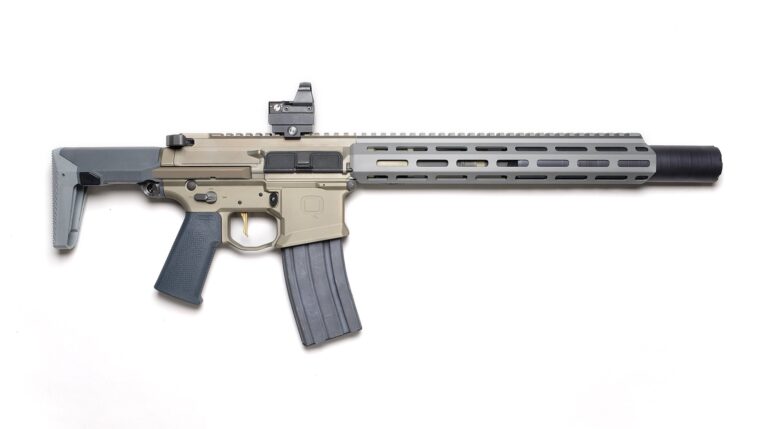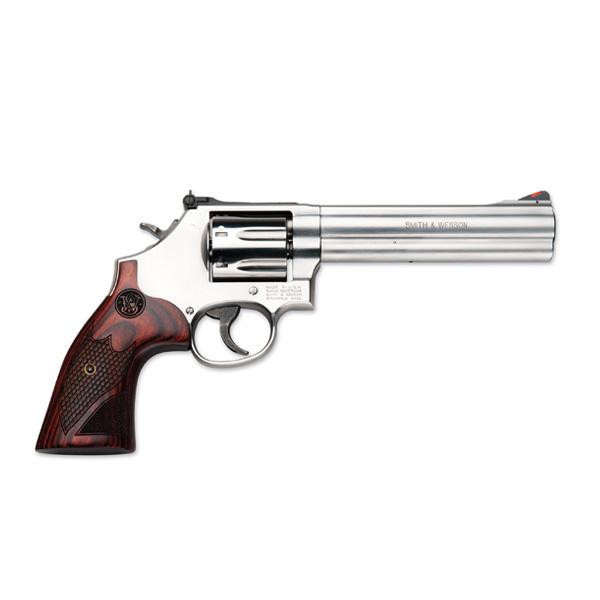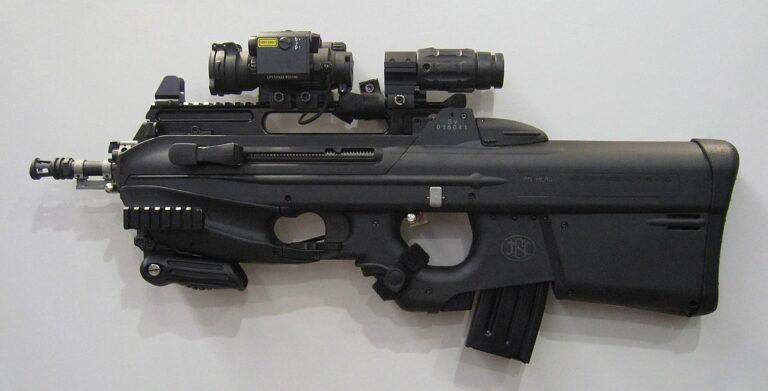Introduction
The Mauser C96, often nicknamed the “Broomhandle” (because of the distinctive shape of its stock), is one of the most recognizable and iconic semi-automatic pistols in history. Produced by Mauser from 1896 to 1937, this weapon has been adopted by a wide variety of users around the world, from military officers to civilians to revolutionaries. Its innovative design, firepower and cultural impact have made the C96 a unique model that remains a firearms icon.
History and development
The Mauser C96 saw the light of day at a time when semi-automatic pistols were still an emerging technology. Designed by the Feederle brothers, Mauser employees, and approved by Paul Mauser, the pistol went into production in 1896. The C96 was one of the first semi-automatic pistols to achieve significant commercial success, thanks to its robust design and impressive performance.
A worldwide success
Since its launch, the Mauser C96 has attracted worldwide interest. Exported to many countries, it was used by soldiers, policemen, adventurers and rebels. Although the German army adopted it only in limited quantities, it became very popular abroad, notably in China, Russia and various Latin American countries. Its distinctive design and exceptional performance also made it a weapon of choice for British officers during the Second Boer War.
Revolutionary design
The C96 was unique in many ways. Unlike most pistols of the time, it had a fixed magazine located in front of the trigger, reloaded by blade-loaders. Its removable wooden stock could be used as a carrying case, transforming the pistol into a compact rifle. This design, though complex, offered great versatility on the battlefield.
Technical data
The Mauser C96 stands out for its impressive ballistic performance and avant-garde design. Here’s a breakdown of the technical features that have made it so famous.
Main specifications
Caliber: Mainly 7.63 x 25 mm Mauser, but also produced in 9 mm Parabellum and other calibers.
Magazine capacity: 10 cartridges (standard), with 6- and 20-round variants.
Weight: 1.25 kg empty.
Total length: 312 mm.
Barrel length: Between 140 mm and 200 mm depending on version.
Effective range: approx. 150 m, extendable to 300 m with detachable stock.
Firing rate: Up to 900 shots per minute for automatic models.
Ballistic performance
The 7.63 x 25 mm caliber, one of the fastest handgun calibers of its time, enabled the C96 to fire projectiles at a muzzle velocity of around 430 m/s. This high velocity conferred great piercing power and a taut trajectory, ideal for medium-range shooting.
Variants and evolutions
Over the years, the Mauser C96 has had many variants, each adapted to specific needs.
Emblematic models
Standard model: Produced in 7.63 mm caliber, this is the most widespread version.
Red 9: Used by the German army during the First World War, chambered in 9 mm Parabellum with a red “9” engraved on the stock.
M712 Schnellfeuer: Automatic version with fire selector, very popular in close combat.
Chinese models: Local copies made in China, often modified to use removable chargers.
Exports and copies
The commercial success of the C96 led to the production of numerous copies by foreign manufacturers. China, in particular, produced millions of copies, some faithful to the original and others heavily modified.
Use in conflicts
The Mauser C96 was used in many major conflicts, from World War I to the civil wars in China and Spain.
World War I
Although produced primarily for the civilian market, the C96 was adopted by German forces as an additional weapon. The “Red 9” version was introduced to harmonize the caliber with Luger P08 pistols.
Chinese civil war
The C96 and its Chinese copies were very popular with Chinese warlords and revolutionaries alike. Its power and versatility made it ideal for fighting on varied terrain.
Other conflicts
It was also used in the Spanish Civil War, World War II and various colonial conflicts, where it was often preferred for its stopping power and reliability.
Cultural impact
The Mauser C96 has become a cultural icon, appearing in numerous films, video games and historical accounts. For example, it inspired Han Solo’s blaster in the “Star Wars” saga. Its unique silhouette makes it an instantly recognizable weapon charged with symbolism.
Conclusion
The Mauser C96 is much more than a firearm: it’s a testament to engineering and innovation. Its distinctive design, firepower and heritage make it a legendary weapon. Even today, it remains a highly sought-after collector’s item and an icon of military history.









